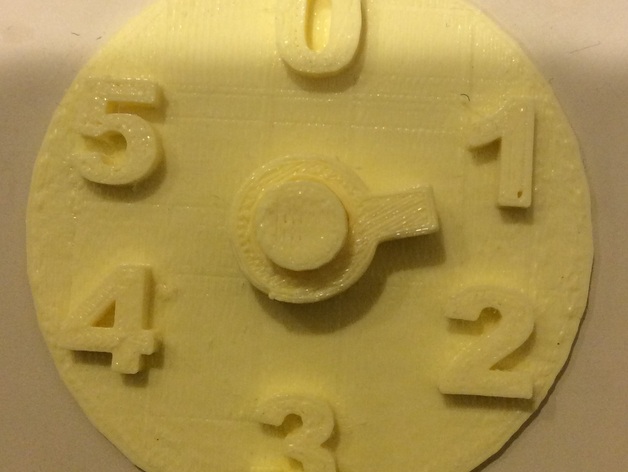
Modular Arithmetic
thingiverse
In this engaging activity, students embark on a journey to understand modular arithmetic by first discovering what possible remainders of whole numbers look like. They will then create a 3D model of a clock with the remainders of a chosen number value, providing a tangible representation of abstract concepts. Using this model, students will work through problems finding remainders and be introduced to the notation a≡b (mod n). By participating in this activity, students will gain a deeper understanding of modular arithmetic, including how to find reminders when any number is divided by n, the congruent notation for modular arithmetic, and that the remainders of a number n go from 0 to n-1. This topic can be taught at various points after students have learned how to divide and find remainders. The activity is suitable for college-level number theory courses, but its skill level is relatively low, making it accessible to younger students. Having a physical 3D model will help make the definition more concrete and memorable. Students will learn essential skills such as modeling with mathematics (CCSS.Math.Practice.MP4), using appropriate tools strategically (CCSS.Math.Practice.MP5), and looking for and making use of structure (CCSS.Math.Practice.MP7). The activity is designed to be self-guided, but the teacher can choose to go over parts of it together. Day 1 involves quick explorations of remainders, leading to discovering that possible remainders when dividing by a number n are 0 to n-1. Students will then design and print a clock face, which can be completed overnight. On the second day, students use their clocks to practice finding remainders, learn the congruent notation, and do practice problems using it. This activity is estimated to take two days, with the worksheet split up into two different days. The only background knowledge students need is to be able to divide whole numbers and find the remainder when dividing. An introduction to Algebra may also be useful since the last problems use x as an unknown to solve for. By completing this project, students will have made a clock and know how to tell when two numbers are congruent in mod n. If you choose to go over the answers together rather than have students hand in their worksheets, this can be treated as an informal assessment or part of a participation grade. A sample rubric is provided below: Day 1 (points) * Got remainders correct on clock for chosen n value (1) * Participated in answering worksheet questions (1) Day 2 * Correctly answered each part (a-d) (1 each, 4 total) * Used the new notation correctly (1) * Correctly answered each part (a-c) (1 each, 3 total) * Total: 10
With this file you will be able to print Modular Arithmetic with your 3D printer. Click on the button and save the file on your computer to work, edit or customize your design. You can also find more 3D designs for printers on Modular Arithmetic.
